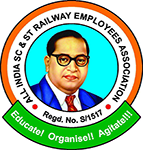Master Circular No. 6 Joining Time CONTENTS No. Particulars 1. Introduction 2. General 2.1 – On Temporary Transfer 2.2 – On Request Transfer 3. Date of Commencement 4. Quantum of Joining Time 4.1 – When the Transfer is within the same station. 4.2 – When the Transfer Involves Change of Residence. 4.3 – Joining Time and Holidays 4.4 – Joining Time and Other Leaves 5. Extension of Period of Joining time 6. Credit for Unutilised Joining Time 6.1 – Special Casual Leave in Lieu of Joining Time 7. Pay and Allowances for the Period 8. Other Provisions 8.1 – Joining Time on Selection From Open Competition 8.2 – Fresh Joining Time on New Transfer while on Joining Time 8.3 – Own Leave and Pay On Request Transfer 8.4 – Application of Joining Time Rule on Transfer to/From Other Units 8.5 – Joining Time To TA Personnels 9. General Instructions and Interpretation of Referred Letters 10. Details of The Referred Letters 11. Other Railway Boards Orders on the Subject 12. Chapter 11 of IRECVol. I Joining time Presently the instructions relating to the grant of joining time are contained in a number of letters issued by the Railway Board from time to time. The Railway Board have now decided to issue a consolidated circular, as below, embodying the instructions issued so far on the subject for the information and guidance of all concerned. 2. General Joining time is granted to a Railway servant transferred in public interest, to enable him to join a new post either at the same station or at a new station. (Letter No. E (G)79 JTI/1 dated21.02.1980). 2.1No joining time is admissible to a Railway servant for temporary transfer. Only the actual transit time as admissible in the case of journey on tour will be allowed (Ref: letter No. E (G) 83 3T1/1, dated: 20.11.1983). 2.2Joining time is not admissible to Railway servants transferred at their own request. (Ref: letter No. E (G)79 JTl/1, dated14.03.1983). 3. Date of Commencement : Joining time commences from the date of relinquishment of charge of the old post, if the charge is made over in the forenoon or on the following date, if the charge is made over in the afternoon (Letter No. E (G) 79 JT1/1, dated : 21.02.1980). 4. Quantum of joining time Joining time will be calculated in all cases from the headquarters station where the Railway servant was serving, including the cases where the Railway servant received transfer orders or makes over charge of the old post at a station other than his old headquarters or where the headquarters is changed to the station to which he has proceeded on tour or where his temporary transfer is converted into permanent transfer. 4.1 Joining time is restricted to not more than one day when the transfer is within the same station or where the transfer does not involve a change of residence from one station to another. Same staion for this purpose will mean the area falling within the jurisdiction of the same municipality or or Corporation including such of the suburban municipalities, notified areas of Cantonment as are contiguous to the named municipality. (Ref : Board’s letter No. E(G) 79 JT1/1 dated 21.02.1980). 4.2.If transfer involves change of station and change of residence the Railway servant is entitled to joining time with reference to the distance between the old headquarters and the new headquarters by the direct route and ordinary mode of travel as given below : Distance between the old and the new headquarters, Joining time admissible. 1000 Kms.or less 10 days More than 1000 Kms. 12 days More than 2000 Kms, 15 days (In case to travel by air the maximum will be 12 days) (Ref. Board’s letter No. E (G) 79 JT1/1, dated 21.02.1980). 4.3Where holidays precede the joining time, there is no need for extending the joining time (Ref. Board’s letter No. E (G) 79 JT1/1, dated 03.07.1982). When holidays follow the joining time the normal period of joining time should be deemed to have been extended to cover the holidays. (Ref. Board’s letter No. E (G) 79 JT1/1, dated 07.02.1983). 4.4Joining time can be combined with vacation and/or regular leave of any kind or duration except casual leave. (Ref. Board’s letter No. E(G)79 JT1/1, dated 21.02.1980) 5. Extension of Period of Joining time : Extension of joining time beyond the limits mentioned in para4.2 above can be granted up to a maximum of30 days by the Head of the Department/Divisional Railway Manager in the case of non-gazetted Railway servants. Beyond30 days, the case should be referred to the Ministry of Railways. The guiding principle for dealing with cases of extension of joining time is that the time for preparation should be approximately equal to8 days plus reasonable transit time plus holidays if any following the extended joining time. While computing the transit time, allowance could be made for time unavoidably spent due to disruption of transport arrangements caused by strike/natural calamities or the period spent awaiting the departure of the Steamer. (Letter No. E (G)79 JT1/1, dated21.02.1980). 6.Credit for Unutilised Joining Time : Where the full joining time is not availed of, the number of days of joining time admissible to the Railway servant (subject to a maximum of15 days) reduced by the number of days actually availed of will be credited to his leave account as LAP, subject to the usual restriction of accumulation of LAP. 6.1Sanction of special casual leave in lieu of joining time is not admissible. (Letter No. E (G)79 JTI/1, dated21.02.1980). 7. Pay and Allowances for the Period Joining time will be regulated as duty during that period and the Railway servant will be entitled to be paid joining time pay and allowances equal to the pay and allowances drawn before relinquishment of charge of the old post. He shall not be allowed conveyance allowance or permanent travelling allowance. (Letter No. E (G)79 JTl/1 dated21.02.1980). 8.Other Provisions : Railway servants discharged from one office due to reduction of establishment and posted to another Railway office are entitled to joining time, if the orders of appointment to the new post are received by them before discharge. If appointed after discharge, the period of break may be converted into joining time without pay provided the break does not exceed30 days and the Railway servant has rendered not less than3 years of a continuous service on the date of discharge. The power in this regard shall be exercised by the Head of the Department. (Ref: Board’s letter No. E (G)79 JT1/1, dated21.02.1980). 8.1Railway servants and permanent Central and State Government employees are entitled to joining time for appointment to posts under the Railways on the results of competitive examination and/or interview open to all. Temporary Railway servants who have not completed three years of regular and continuous service, though entitled to joining time, will not be eligible for joining time pay. (Ref: Board’s letter No. E (G)79 JT1/1, 21.02.1980). 8.2A Railway servant while in transit, on transfer, if directed to proceed to a place different from the one to which he was initially transferred will be entitled to joining time already availed of up to the date of receipt of revised transfer orders plus a fresh spell of full joining time from the date following the date of receipt of the revised transfer orders. The fresh spell of joining time will be calculated from the place at which he received the revised orders). (Ref: Board’s letter No. E (G)79 JTI/1, dated21.02.1980). 8.3A Railway servant transferred at his own request may be granted regular leave by the competent authority, as may be admissible under the leave rules applicable, to cover the period between the date of handling over charge at the old station and the date of taking over at the new station, provided he applies for it and the competent authority is willing to sanction (Refer letter No. E (G)79 JT1/1, dated14.03.1983. If such a Railway servant relinquishes charge at the old station on the eve of a holiday/holidays and report at the new station on the forenoon of the day immediately after the holiday(s), the intervening period may be treated to have been availed of as holidays and he is not required to take leave for the period. Pay for holidays intervening the date of relief and the date of joining the new place will be borne by the department where the Railway servant joins after his transfer. (Ref: Letter No. E (G)83 JTI/1, dated29.05.1989). 8.4Railway servants joining Central Government/Defence services or other organisations having their own separate rules in regard to joining time will be governed by those rules while proceeding to join the post and also while returning therefrom to the parent office, unless different provisions are expressly made in the terms of deputation/secondment as may be mutually agreed upon between the lending and borrowing authorities. Similarly, employees of Central Governments, Armed Forces Personnel, those paid from Defence estimates or other organisations, appointed to posts in the Railway will be governed by the instructions contained herein in respect of joining time, unless different provisions expressly made in the terms of deputation/foreign service exist. (Letter No. E (G)79 JTI/1, dated21.02.1980). 8.5Officers and personnel of the Railway Engineer units of the Territorial Army, when embodied for military duty in aid of civil power/military power may be allowed joining time under the Railway rules applicable to the officers and employees concerned in terms of Board’s letter No. E (G) 79 JTI/1, dated21.02.1980. The facility of joining time will be admissible to the officers and personnel after disembodiment also. (Ref: Board’s letter No E (ML) 73 ML 3/39(i), dated22.03.1971). 9. (i) While referring to this circular, the original letters referred to herein should be read for a proper appreciation. This circular is only a consolidation of the instructions issued so far and should not be treated as a substitution to the originals. In case of doubt the original circulars should relief upon as authority. (ii) The instructions contained in the original circulars referred to have only prospective effect from the date of issue unless specifically indicated otherwise in the date of circulars. For dealing with old cases, the instructions in force at the relevant time should be referred to; and (iii) If any circular on the subject which has not been superceded, has not been taken into consideration in preparing this consolidated letter, the said circular, witch has been missed through oversight should be treated as valid and operative. 10.Copies of letters on the basis of which the consolidated circular has been prepared are enclosed.
- Home
- About Us
- Bylaws
- CEC
- Zonal Railway & PUs
- Central Railway
- East Central Railway
- East Coast Railway
- Eastern Railway
- Metro Railway Kolkata
- North Central Railway
- North Eastern Railway
- North Western Railway
- North East Frontier Railway
- Northern Railway
- South Central Railway
- South East Central Railway
- South Western Railway
- Southern Railway
- Western Railway
- West Central Railway
- ZECs
- Facilities
- Press Release
- Complaints
- Gallery
- Contact us
© Powerd by : MAK TechnoLabs







